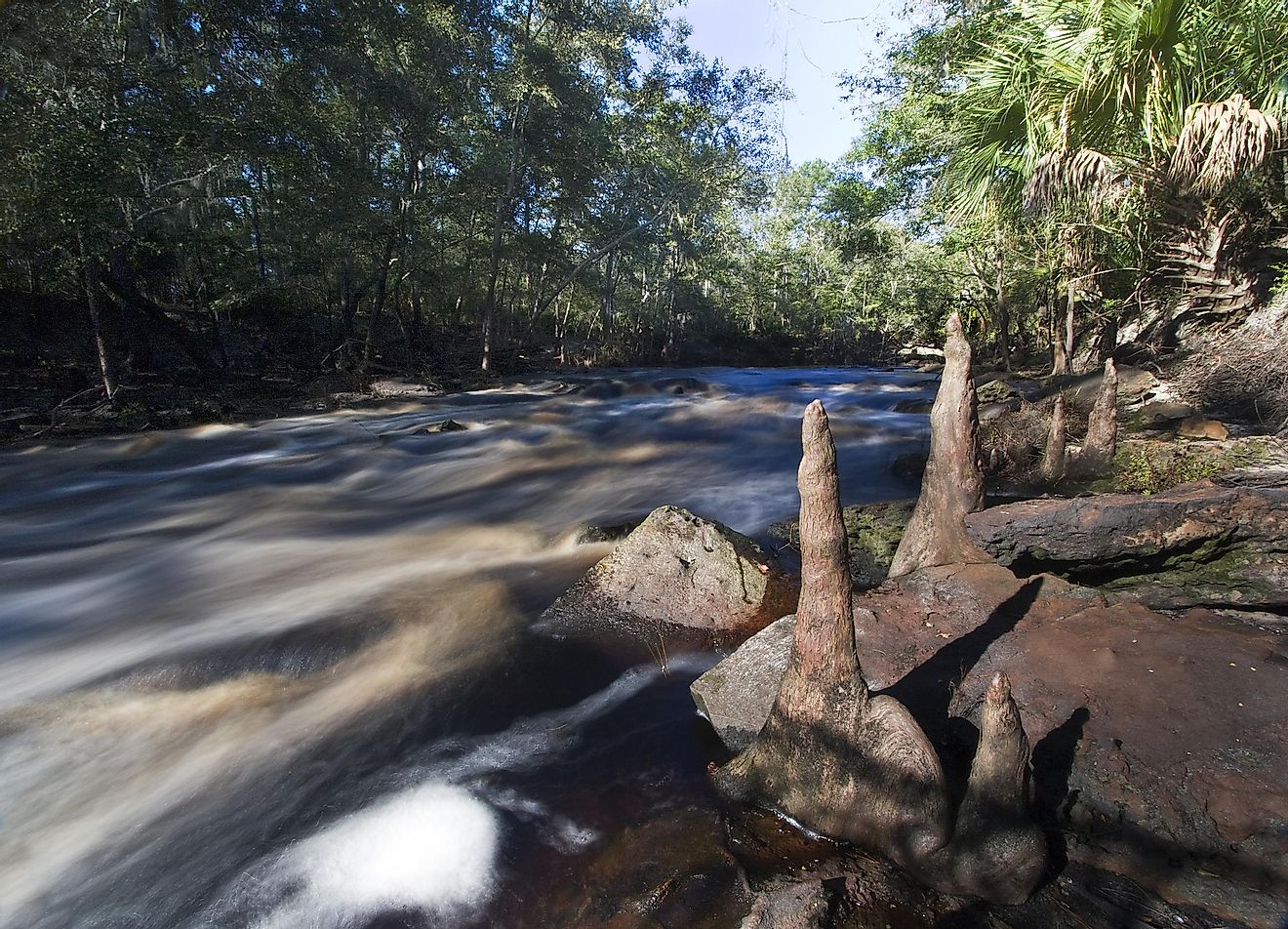Aucilla River Archaeological Sites

5. Description
The Aucilla River basin one of the most treasured archaeological sites in North America. The source of the Aucilla River lies at the north of Thomasville Georgia, United States (US). From there the river meanders 75 miles to the Gulf of Mexico. For about 5 miles, the river flows through the eastern portion of St Marks National Wildlife Refuge, in Florida’s Big Bend. The Big Bend is a remote, rugged and sparsely populated area with coastal wetlands teeming with birds and marine life. Aucilla River defines the boundary between Florida and Georgia, at the southeastern border of Jefferson County. Its drainage basin covers almost 750 square miles according to U.S Fish and Wildlife Service (FWS). As Aucilla River flows, it picks up decaying vegetation giving its waters a black tint; hence it’s informally dubbed the “blackwater” river. The name Aucilla is among the oldest place names in Florida and means lost.
4. Historical Role
During the Paleo-Indian period (13,000-7,900 BC), the climate in Florida was cooler, sea levels lower, and a greater section of the land mass was above water. The region’s karst base consisting of water-soluble limestone had sinkholes and catch basins. With the change in climate, sea levels rose and limestone aquifers filled with fresh water bubbling from sinkholes. These springs formed into rivers like St Marks, and Aucilla, and carved their channels to the Gulf of Mexico The rivers also covered the Paleo-Indian camps where captured animals were butchered. In recent years archaeologists have found tools and bones in river beds dating back thousands of years. Bones from the extinct mastodon, sloth, bison and Pleistocene horse, and seeds have also been discovered in and near the river. The Aucilla River is rich in these ancient artifacts due to lack of oxygen under water. This evidence from the past has helped provide a glimpse at how ancient human populations lived and their dietary styles they followed.
3. Modern Significance
The Aucilla River controls floods, purifies water, provides a sanctuary for fish and wildlife and recharges underground water supply for use by humans and wildlife, according to Tall Timbers Research Station, and Land Conservancy (TTRSLC). It’s also a thriving tourist destination. Florida State has designated the river as “special waters” part of 43 outstanding Florida waterways program. Sections of the renowned 1,400 mile Florida National Scenic Trail that is a hiker’s paradise is along the Aucilla River bank. The River is ideal for kayaking, paddling, and angling. Aucilla River is also a favorite with science researchers seeking to understand its diverse ecosystem, and conserve it. Also by studying the ancient artifacts found on Aucilla River, archaeologists are discovering the early beginnings of humans and their behaviors.
2. Habitat and Biodiversity
From its source, in the swamps to the north of Thomasville, Georgia, the Aucilla River passes several habitats sustaining diverse flora and fauna. When it gets to the Gulf of Mexico and its acidic water mixes with the freshwater, the tidal marshes become a productive nursery, habitat, and feeding section for fish, and shellfish. Fish species like the Suwannee bass, redbreast sunfish, channel catfish, and bowfin inhabit the Aucilla River. Within the Georgia Stateline, where the river is swampy, cypress, gum and bay trees shelter wildlife species like the waterfowl, quail, bear, turkey, wading bird, reptiles, and amphibians. On the Aucilla River surface, lily pads also dot the surface.
1. Aucilla River Prehistory Project
Aucilla River is among the most significant archaeological sites in North America. Archaeologists long knew there were plenty of bones, and Indian artifacts in rivers, and sinkholes of Florida’s karst region. Karst area is made up of chemically soluble rock like limestone, dolomite, gypsum and anhydrite. In 1983, the Aucilla River Prehistory Project (ARPP) was launched by science researchers from the Florida. It aimed to study the life history of prehistoric humans in the region. The discovery unearthed 40 Paleo-Indian sites in a small section of the river, the earliest known evidence of man’s existence in North America according to TTRSLC. ARPP also helped in the production of a piece by piece portrait of some of North America’s earliest humans, wildlife, and plant life. This elucidation was done by analyzing animal dung, bones, and skulls, plant remnants, pollen records, fish hooks, bone knives, hair, Indian artwork, and the world’s oldest canoe. Every year ARPP continues to produce fresh evidence of human, animal and plant life of the past 30,000 years.







